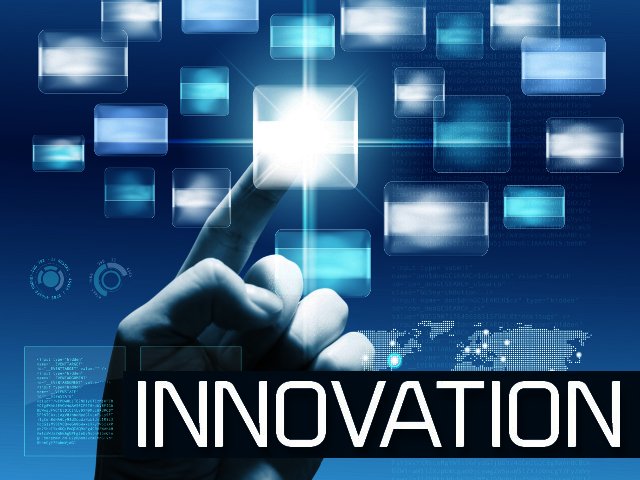Technology implies recognizing exactly how to do something: the expertise. Every company requires to have the knowledge of some process, regardless of just how straightforward it might be.
However to proactively take part in the marketplace, know-how needs to be matched with the capacity to apply the technology, the can-do.
Can-do is a must. A company might have the technological understanding of a given efficient process, however it can not use it effectively without the methods to execute it efficiently. Can-do includes schedule of experienced employees, capital items (equipment and installations), and additionally the means to market the products.
TRAINEE: Just how can a firm acquire expertise?
TEACHER: The basic means to acquire innovation are:
· Work with workers with competence in the field.
· Purchase knowledge from other firms via permit and/or technological aid contracts.
· Receive it from the maker of specialized devices mounted.
· Perform in-house research and development (R&D).
It is necessary to state the requirement of an Innovation Strategy.
In all firms, from a footwear manufacturer to a chipmaker, some type of Modern technology Method must be in place to stay affordable and also area opportunities
TRAINEE: Can we discuss and also example of such technique?
TEACHER: Sure.
Components of an Innovation Technique
I. Understanding
· A company need to be regularly familiar with the existing and upcoming technologies in its area, be it from outside resources of from within the business. The methods to do this are lots of, from scanning trade publications to participating in exhibition to efficiently handling of the in-house swimming pool of knowledge.

II. Evaluation
· Make a decision which innovations might impact business.
· Evaluate capacity of these technologies to impact the business favorably or adversely.
· Examine the company’s capacity to incorporate these technologies properly.
III. Execution
· Keep a concern schedule based on prospective cost-benefit as well as feasibility.
· Organize to allow incorporation of brand-new innovations.
STUDENT: Often times, in relation to a company’s capacities, one hears about development, creativity as well as innovation. Can you please specify?
TEACHER: Gladly. We have to try to define and compare these three activities, which are the motors of technical change. Certainly the definitions overlap a whole lot, however still there are standard distinctions. A company needs to be clearly knowledgeable about the distinctions.
I. Innovation means uncovering something significantly brand-new.
· To design something in today’s setting is hard and also very pricey. An intensive as well as pricey R&D task need to exist.
· Numerous inventions take place “before their time” and can not be applied effectively in existing market conditions. Usually creations bring license security, however, for a minimal time just; a long delay in functional application can make this security worthless.
· Despite the previous caveat, in some cases an innovation can be a hit as well as be enormously lucrative. We become aware of this with certain frequency in the medicine market, bring familiar names such as Upjohn’s Minoxidil, Eli Lilly’s Prozac or Pfizer’s Viagra. However it should be understood that the investment in R&D behind any of these hits is massive.
II. Creativity is creating a novel mix of existing innovations or techniques.
· A new product composed of existing aspects (as the first Apple computer system).
· An initial method to make use of an existing technology (as utilizing the Net for a new solution -i.e., a website publishing and selling “electronic publications”).
· Creative thinking can be expensive and also entailing a great deal of high-tech R&D in sub-technologies (as in developing a much faster, smaller sized integrated circuit) however often it might be economical and very successful This takes place sometimes in producing when a staff member thinks of an improvement in the production procedure.

III. Technology can be specified as the practical and rewarding application of the suggestions stemmed by creation or imagination; “converting suggestions right into value”. In industrial companies, the goal of innovation is:
· To bring brand-new rewarding products or services to market.
· To improve competition through reduced manufacturing price.
STUDENT: As in every facet of company, there must be a demand for handling this development process.
INSTRUCTOR: Cutting-edge ideas flow constantly to monitoring from outside and inner resources. Some might be great, others not as great. The secret is, basically, to recognize the ones the firm ought to purchase and also ultimately carry out.
This circulation of concepts must be encouraged, never ever prevented. The source of all ideas are individuals.
PUPIL: A truism, certainly. Clearly, machines do not have concepts!
INSTRUCTOR: Yes, yet a truism often forgotten by administration.
A large percentage of originalities originates from internal resources. A worker might have an original concept, or might raise an observation he made at an exhibition.
TRAINEE: What can administration do to encourage people to add their ideas?
EDUCATOR: Let’s see. A company should:
I. Inspire workers to connect their ideas. People should be acknowledged for this, regardless of whether the suggestion is judged an intense one or a foolish one. No person ought to ever be criticized for their suggestions; no matter what management considers a tip made by a staff member, they must be complimented by the basic fact of communicating it.
II. Great concepts can come from any kind of component of the firm. Circulation of ideas need to not be restricted to find from specialized sources. A concept concerning a brand-new product or an expansion of the product line will possibly originate from a marketing specialist, But a clerk might additionally have a beneficial suggestion regarding advertising and marketing; nevertheless, he is additionally a consumer.
III. Ideally, workers ought to receive financial benefits forever ideas that are applied, specifically in instance of tips originating from people not specifically employed for that purpose such as R&D personnel. Leading companies such as IBM have had this type of programs in place for decades and also while several employees got considerable rewards, the company made money by using the suggestions.
IV. Criticism about a new idea ought to be postponed. No idea ought to be discarded prima facie. There should be a systematic approach to assess recommendations by a formally organized team or committee.
PUPIL: OK, currently a business has actually picked an advancement project with great capacity. What comes next?
TEACHER: Currently the firm deals with a very vital job: executing the innovation.
Choosing to purchase an innovation is challenging. It is among the areas where administration understanding is very critical. Still, some unbiased aspects have to be thought about:
- Ideas are constantly unclear at the start. Appealing suggestions ought to be “supported”, thought about, discussed, re-considered.
- Advancement must be judged according to its relevance to the brief or long-term affordable benefit of the business. The existing ideology is that a firm needs to focus in its core expertise, its “core businesses”. So, an excellent idea might not fit right into this plan. Once more … the idea may be the kernel of a brand-new core business!
- The dangers as well as potential advantages ought to be evaluated. Launching an entirely new item is extra risky and also brings much more prospective benefits than an extension of an existing product line or a revamped package.
- Many innovations pertain to the whole firm. This fact is commonly ignored and consequently leading administration coordination is crucial. The advertising and marketing individuals might make certain that the new packaging for mayo is terrific, but it may be a whole lot much more pricey to make. Decision-making must include all relevant fields of the business. Elderly management needs to make sure that excellent synergy is practiced.
- The sources to be designated to the advancement task ought to be reasonably computed.
- Once authorized, the project ought to have a formally specified technique and also plan. Timing is critical in bringing advancements to market; a reasonable “vital course” of the job ought to be attracted as well as followed-up.
- The task should be clearly connected and also comprehended. Clearly developed objectives in time and continual re-evaluation are vital. Not all projects started are practical, considering that problems might have changed. Choosing to terminate a task is as vital as determining to start it.
